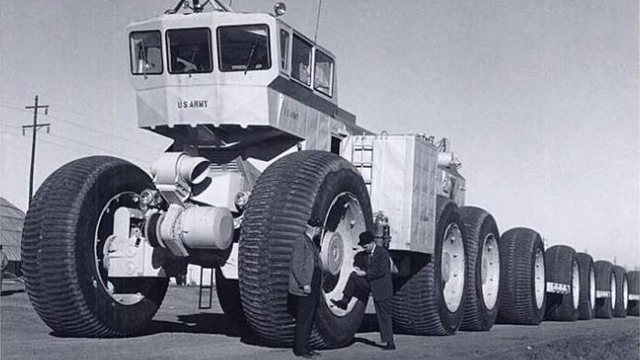The Texan company, LeTourneau, was instructed to design these huge land trains in the 1950s by the US Government.
The United States Army got three units built (experimental ones) and the largest reached a length of 600 feet (183 meters), which holds the official record for being the longest vehicle that is off-road.
Road trains are still in use today, in some roles, but the Army examples (along with a few other derivatives) seem to be the only models which were built as off-road land trains.
LeTourneau was based in Longview Texas and produced heavy equipment, in the early 50’s the came up with the idea of utilizing a diesel/electric transmission that would drive multi-wheeled vehicles.
Each individual wheel would be driven by a separate motor, which served to give better traction as it spread the force out across a number of wheels.
These vehicles were basically the same as locomotives of this time but had rubber wheels instead of steel.
LeTourneau Snow Train 1
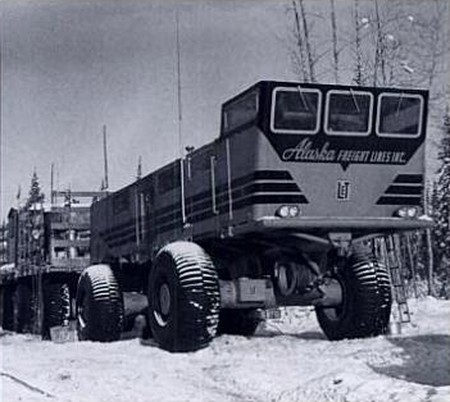
LCC-1
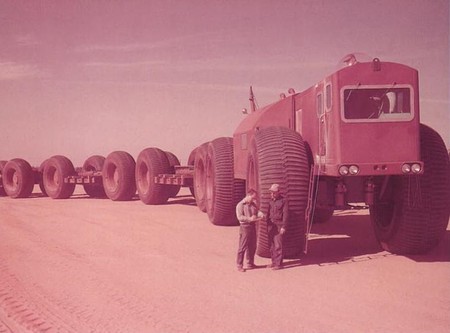
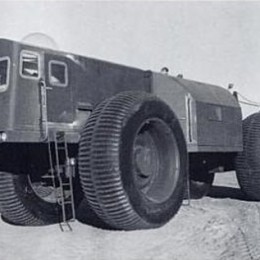
The Army Transportation Corps, in 1954, requested that LeTourneau combines the features of the Sno-Buggy and Tournatrain and combine these into one vehicle.
The result of this was named, by LeTourneau, the YS-1 Army Sno-Train. The Army, however, named it the Logistics Cargo Carrier (LCC-1).
This vehicle combined the Sno-Buggy’s wheels and the Tournatrain’s power system – this made a 16 x 16 vehicle which held one locomotive and three cars; capable of managing a load of 45 tons.
The control cab on the vehicle was split into two compartments; one was a heated driving compartment for three crewmen, and the other section (in the rear) held the diesel engine (600 horsepower), the generators and fuel tanks.
Attached to the rear of the cab was a powered crane also.
TC-497 Overland Train MkII, 1962
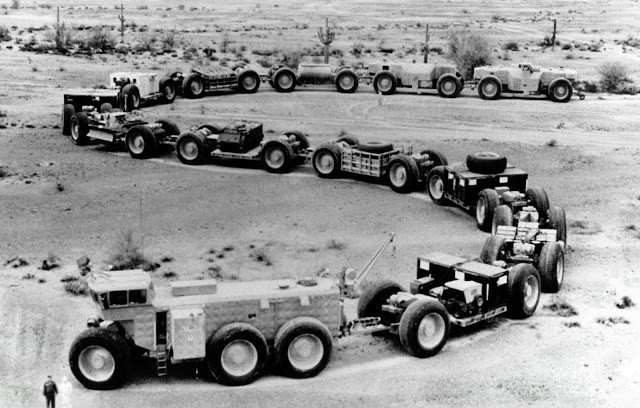
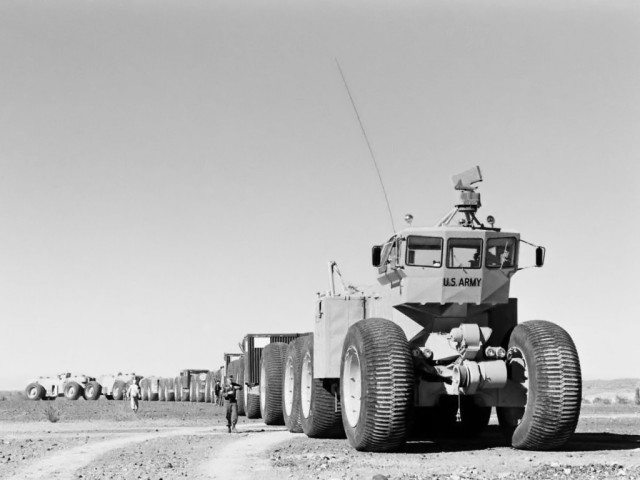
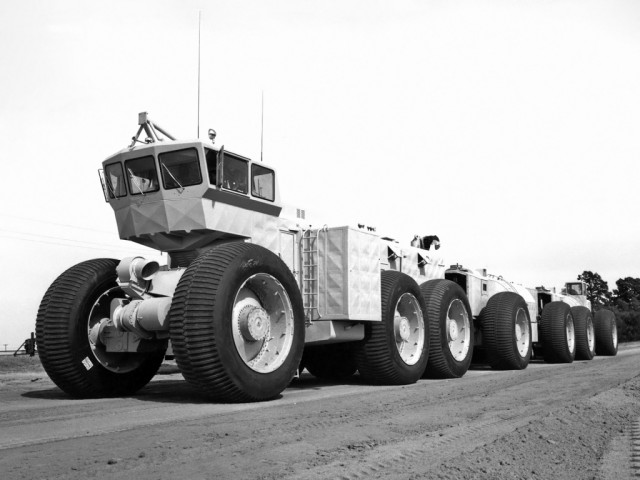
In 1958 the US Army requested a larger model to be produced; this would be the TC-497 Overland Train Mark II. This model would include features to allow the train to become longer. This was powered by gas-turbine engines and had 4 Solar 10MC engines (1170 horsepower).
One of these engines was held in the ‘control car’ and the others spread throughout the rest of the train. The design meant that extra power trailers could be added onto the train at any point, if desired. To bring the weight down of the train they created most of it with welded aluminum.
Steering was an issue and a dangerous one at that; if rounding a corner the trailers automatically tried to even the angles created between them, which meant they formed into a long arc. If the reason for turning was to avoid an obstacle, this meant the trailers could possibly hit the item as it rounded.
As a solution to this problem, steerable wheels were added to the trailers which were controlled from the driver’s cab. This meant the wheels on the trailer would turn at the same time as the front wheels and therefore manage sharp angles better.
This version, the Mark II, had a bigger 6 wheeled cab that reached a height of 30 feet (9.1 meters) and was no longer articulated; this was no longer necessary with the new wheel system put in place. The engine was smaller than before which meant the cab could now hold six crewmen and toilets, sleeping quarters and a galley.
Radar was even added to this design. Two more power cars and a further ten cargo cars were produced for testing; this meant the train now reached a length of more than 570 feet (170 meters).
On a flat surface, the train could carry 150 tons of cargo at a speed of approximately 20mph. When fully loaded it could travel 350-450 miles (560-640km) but could go beyond these distances with the addition of further fuel trailers.
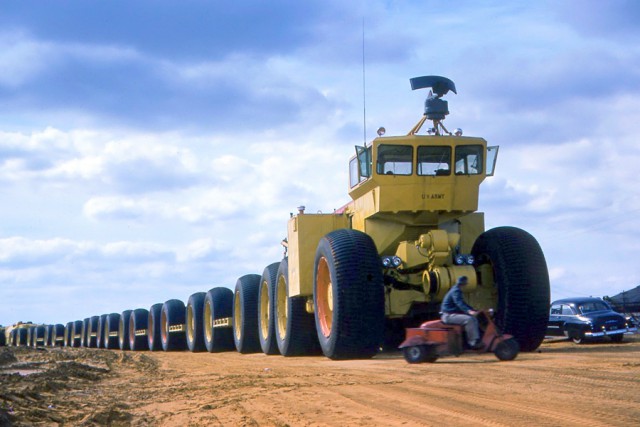
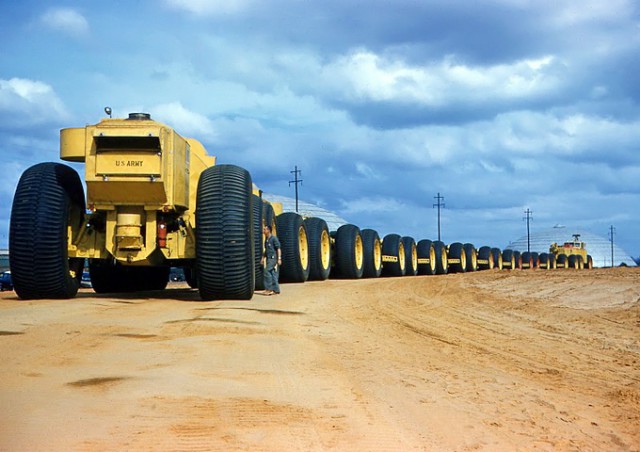
Read Source
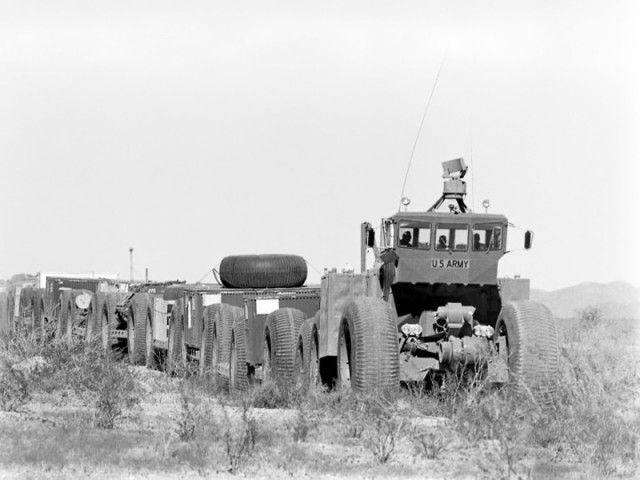
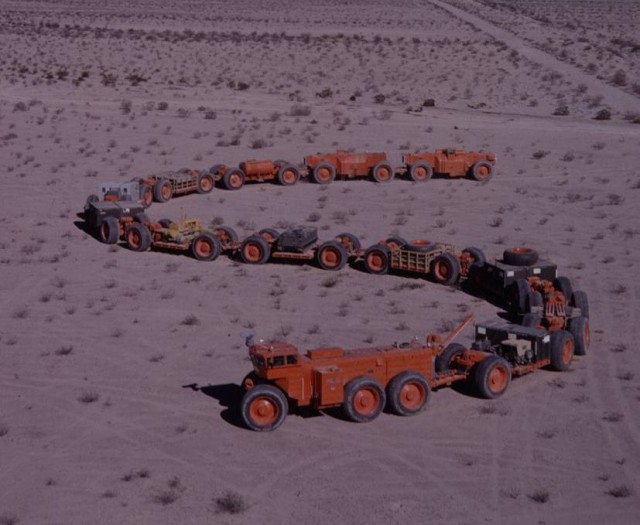
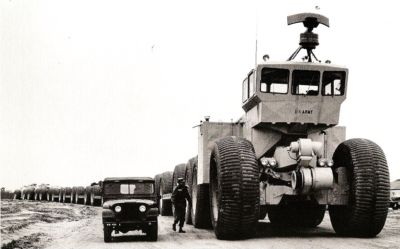
Source
The last remaining Overland Trains
The final specs were finished in 1960, and the building took the majority of 1961. After preliminary tests, it was given over to the Army in 1962 (February) and moved to the Yuma Proving Ground in Arizona.
Under testing conditions the vehicle performed well; however, the Army soon gave this idea up due to the recent addition of heavy-lift helicopters (such as S-64 Skycrane).
The vehicle itself remained unused and then became available for sale in 1969 at $1.4 million. All that remains now is the control cab (still at Yuma) and the rest was sold as scrap.
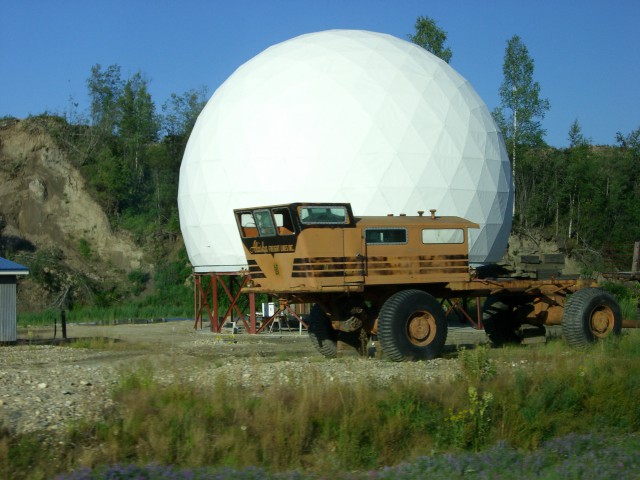
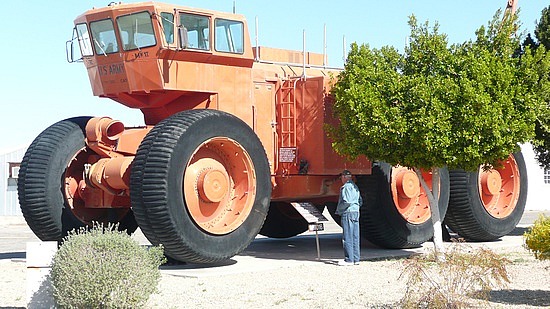
1962 LeTourneau-Westinghouse Overland Train Mk.II/LCC-1 TC497 source
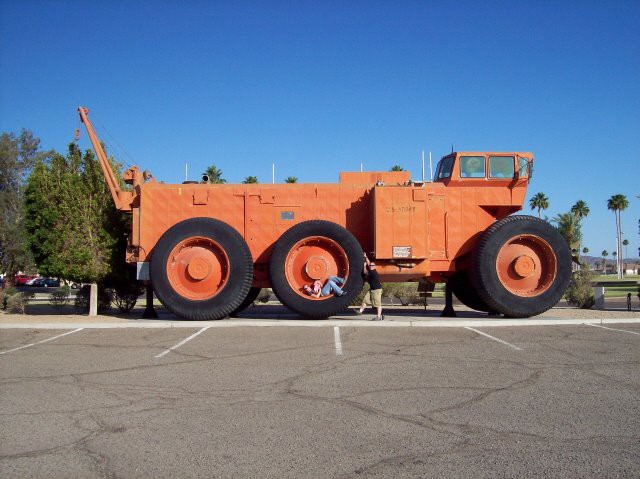
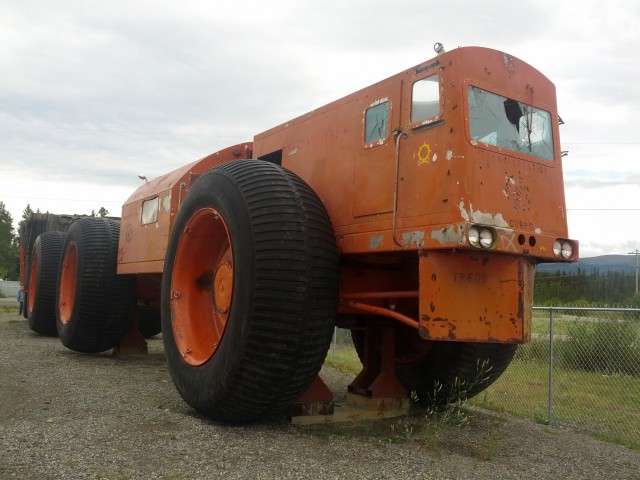
Video
Overland Train – LeTourneau – World’s Longest Off-Road Vehicle
https://www.youtube.com/watch?v=pD19VoUZyr0
